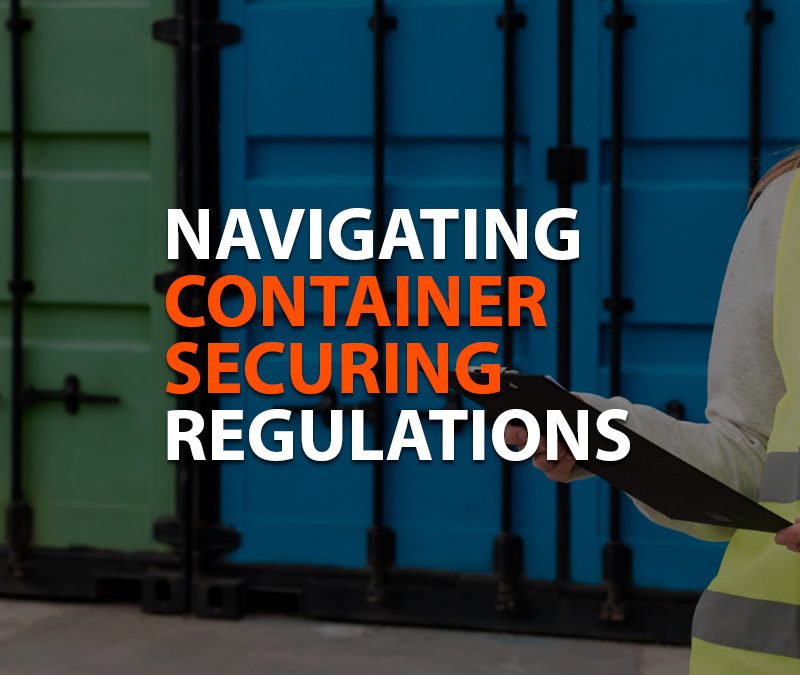In the world of global trade and logistics, ensuring the safety and security of cargo during transportation is of paramount importance. Container securing regulations play a crucial role in maintaining the integrity of shipments, preventing accidents, and safeguarding against unauthorized access. Let’s delve into the world of container securing regulations and understand their significance in modern commerce.
- The foundation of container securing regulations
- International Maritime Organization (IMO) Guidelines
- Weight Distribution and Load Limits
- Securing Methods and Equipment
- Container Integrity and Inspection
- Evolving Security Concerns
- The Role of Technology
- Conclusion
The Foundation of Container Securing Regulations
Container securing regulations are a set of guidelines, rules, and standards established by international organizations, governments, and maritime authorities to ensure that cargo within containers is properly secured for safe transportation. These regulations are designed to prevent accidents, injuries, and damage to goods, as well as to counteract potential security threats such as smuggling and terrorism.
International Maritime Organization (IMO) Guidelines
The International Maritime Organization, a specialized agency of the United Nations, plays a pivotal role in formulating and disseminating container securing guidelines. The IMO’s “Code of Safe Practice for Cargo Stowage and Securing” (CSS Code) outlines principles and best practices for properly loading and securing cargo within containers. These guidelines encompass factors like weight distribution, securing methods, and container structural integrity.
Weight Distribution and Load Limits
One key aspect of container securing is maintaining proper weight distribution. Unevenly distributed cargo can lead to instability, increasing the risk of accidents, capsizing, or damaging the vessel. Governments and maritime authorities enforce weight limits on containers to ensure that cargo is evenly spread and that the container’s center of gravity remains within safe parameters.
Securing Methods and Equipment
Container securing involves using various methods and equipment to prevent cargo from shifting, falling, or damaging the container during transportation. These methods include lashing, bracing, and blocking. Lashing involves using strong cables or chains to secure cargo to anchor points within the container, while bracing and blocking utilize materials to prevent movement within the container.
As you already know, Lashing is one of our specializations!

Container Integrity and Inspection
Regular inspection of containers is essential to ensure their structural integrity and compliance with securing regulations. Containers should be routinely checked for signs of wear and tear, damage, or corrosion. In addition, authorities may inspect containers to verify that cargo is properly secured and that the weight limits are adhered to.
Evolving Security Concerns
Container securing regulations have also been influenced by evolving security concerns in a post-9/11 world. Authorities aim to prevent containers from being exploited for smuggling illegal goods or potential terrorist activities. Container sealing, tracking systems, and advanced screening technologies have been introduced to enhance security and track the movement of containers more effectively.
The Role of Technology
In recent years, technology has played a significant role in ensuring container security. IoT (Internet of Things) devices, GPS tracking, and real-time monitoring systems enable stakeholders to track the location, temperature, humidity, and even the security status of containers throughout their journey. These technological advancements bolster the effectiveness of container securing regulations and help mitigate risks.
Conclusion
In conclusion, container securing regulations are a critical component of the global trade ecosystem. By following these guidelines and standards, stakeholders can ensure the safety, security, and efficiency of cargo transportation. As technology continues to advance and security challenges evolve, these regulations will adapt to safeguard the interconnected world of international trade. 🌐📦🔒






